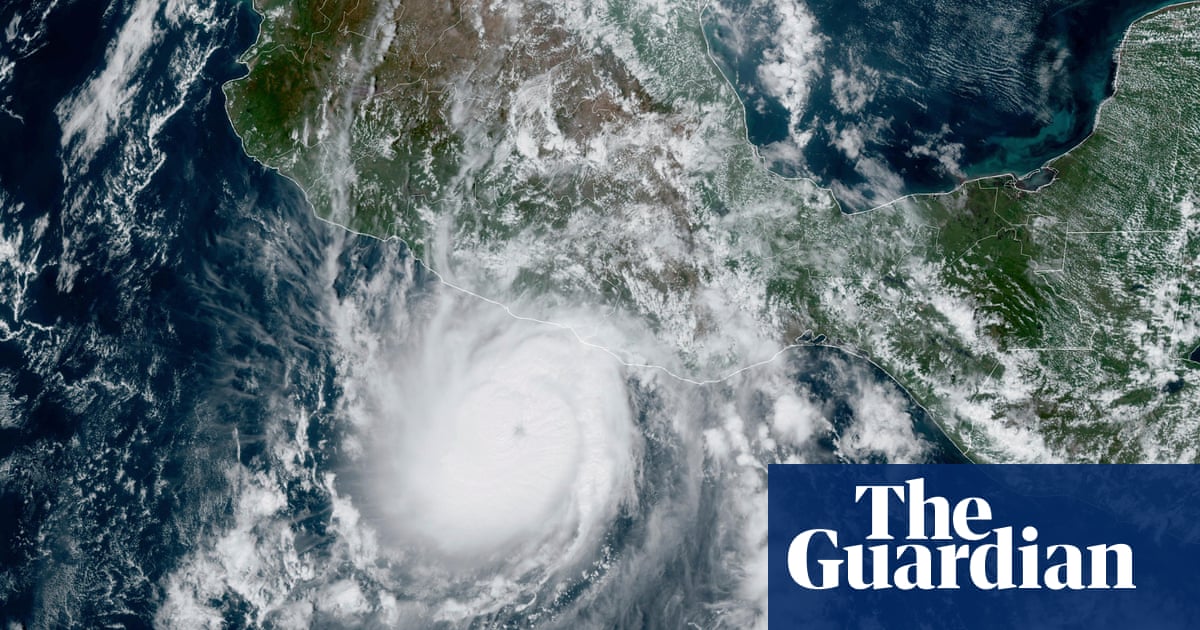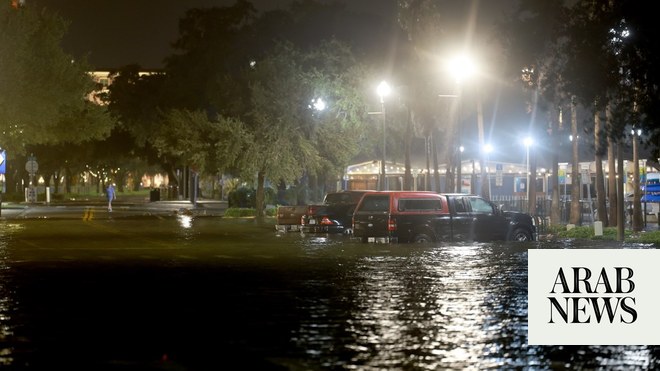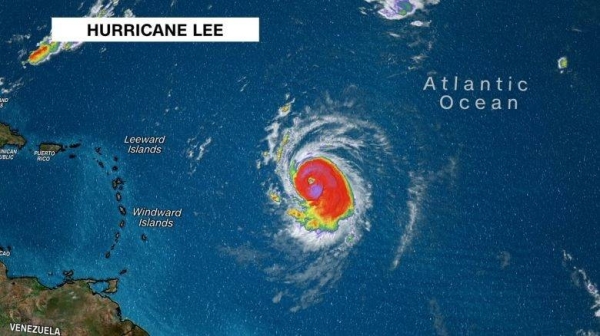
Hurricane Iota exploded into a catastrophic category 5 storm on Monday and bore down on a remote Central American coastal region already reeling from another major storm, Hurricane Eta, with efforts to evacuate villagers hampered by shortages of fuel for boats.
Iota is the record 30th named storm of an extraordinary Atlantic hurricane season. Such activity has focused attention on climate change, which scientists say is causing wetter, stronger and more destructive storms.
Eta was this year’s 28th named storm, tying the 2005 record. Remnants of Theta, the 29th, dissipated on Sunday in the eastern Atlantic. The official end of hurricane season is 30 November.
Iota was due to collide with north-eastern Nicaragua overnight and was packing maximum sustained winds of 160mph, reaching category 5 on the Saffir-Simpson scale, the US National Hurricane Center (NHC) said.
Barely recovering after Hurricane Eta hit two weeks ago, Guatemala and southern Mexico were also bracing for renewed flooding on land already waterlogged from the earlier storm. In El Salvador, the government declared a “red alert” ahead of Iota, suspending school and activating emergency funding.
The hurricane was located about 100 miles east-south-east of Puerto Cabezas, Nicaragua in the Miskito region after whipping past the Colombian islands of San Andres and Providencia before dawn. The Miskito people are descendants of indigenous groups and Africans believed to have escaped from shipwrecked slave ships.
The World Food Programme warned that some 80,000 people in Nicaragua were at risk from Iota, while Honduran authorities said they were evacuating another 80,000. Local authorities and the navy frantically tried to get thousands of families to higher ground or ports in the watery region of jungles, rivers and coastline, which also straddles Honduras and took a direct hit from Eta.
“There are villages that can protect or save themselves, but others cannot cope with this catastrophe after Eta,” said Teonela Wood, mayor of Honduras’ Brus Laguna municipality, which she said was home to more than 17,000 people.
“The biggest problem we have right now is that we don’t have fuel to keep on evacuating people” on boats, Wood said.
Douglas Espinal, emergency services chief in nearby Puerto Lempira, said fuel shortages stemmed from evacuation and rescue efforts during the earlier storm, which went on to dump rain across a large swath of Central America, destroying crops and killing dozens in landslides and flooding.
Espinal said a little extra fuel had arrived on Sunday, allowing him to make some evacuation runs, and that villagers were also making their own way to seek shelter in Puerto Lempira.
The unprecedented 2020 hurricane season comes as Central America is facing an economic crisis linked to the coronavirus pandemic, with experts warning the compounding hardship could worsen infections, spread hunger, and fuel a new round of migration from the region.
The World Food Programme said millions of people in Central America already urgently needed food assistance in the wake of Eta and that it had transported nearly 300 tonnes of food to affected villages in Nicaragua.
Climate change is increasing the intensity of both rain and droughts across Central America, United Nations Refugee Agency (UNHCR) said last week, saying such phenomena can exacerbate the poverty which drives people to flee their homes.












